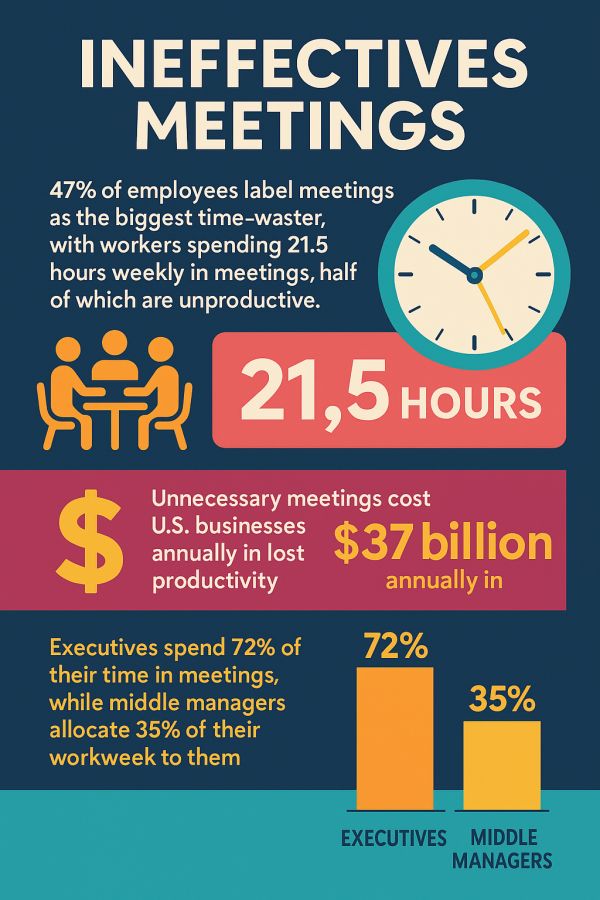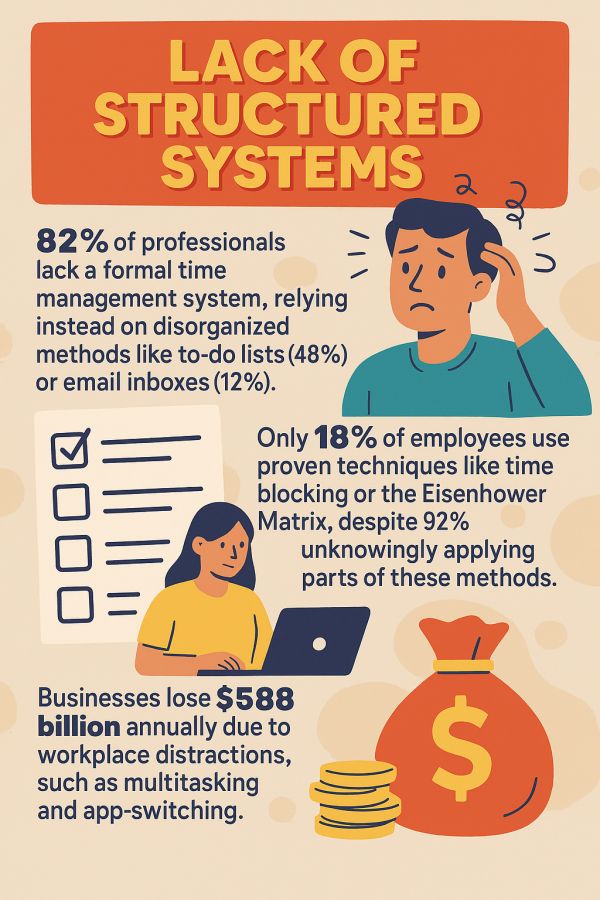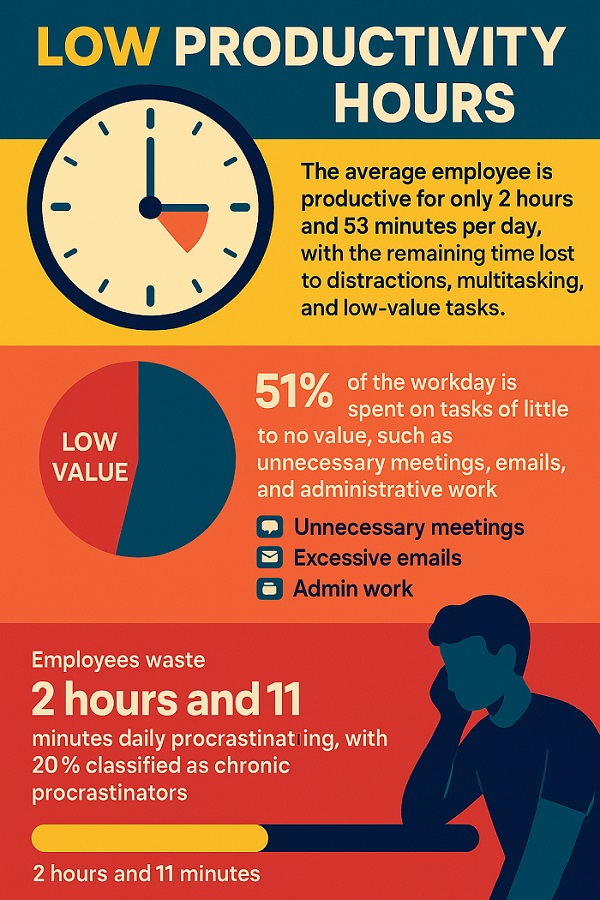- The Time-Blocking Revolution in a Remote-First World
- What is Time-Blocking? The Science of Structured Schedules
- Step 1: Audit Your Time and Priorities
- Step 2: Choose Your Time-Blocking Style
- Step 3: Build Your Time-Blocking Template
- Step 4: Optimize for Energy and Focus
- Step 5: Review and Adapt Weekly
- Real-World Success Stories
- Common Mistakes to Avoid
- Design Your Ideal Day in 2025
The Time-Blocking Revolution in a Remote-First World
Master Your Schedule (Free Templates Included)
Boost productivity in remote and hybrid work with science-backed strategies, real-world case studies, and customizable templates.
In 2025, the lines between work and personal life are blurrier than ever. With 72% of professionals now working hybrid or remote setups, structured routines aren’t just helpful—they’re essential for survival. Enter time-blocking, a proven productivity method that’s surged in popularity for its ability to combat chaos, reduce burnout, and reclaim focus.
This isn’t just about filling a calendar; it’s about designing a rhythm that aligns with your energy, priorities, and the unpredictable demands of modern work. Below, we’ll break down how to build a time-blocking routine that actually works, complete with free templates, actionable case studies, and hacks to thrive in a distracted world.
Here are key statistics on time wasted due to poor time management, synthesized from recent research and studies:
What is Time-Blocking? The Science of Structured Schedules
Time-blocking (or time-boxing) is the practice of dividing your day into dedicated chunks for specific tasks, projects, or priorities. Unlike traditional to-do lists, it assigns when you’ll work—not just what you’ll do. Studies show that this method:
- Reduces decision fatigue by pre-planning tasks.
- Increases focus by minimizing context-switching.
- Improves time estimation skills over weeks or months.
Why it works for remote/hybrid workers: Without office structures, time-blocking creates artificial boundaries to separate work from personal life. For example, a 2024 Asana study found that remote employees using time-blocking reported 34% fewer overtime hours and 28% higher job satisfaction.
Step 1: Audit Your Time and Priorities
“You can’t improve what you don’t measure.”
- Track your current habits: Use a free time-tracking template (download here) to log tasks for 3–5 days. Identify energy peaks (e.g., mornings for deep work) and time sinks (e.g., midday email spirals).
- Categorize tasks: Split activities into:
- Deep work (strategic projects)
- Shallow work (emails, meetings)
- Personal priorities (exercise, family time).
- Rank with the Eisenhower Matrix: Label tasks as urgent/important, urgent/not important, etc. Focus on Quadrant 1 (critical) and Quadrant 2 (long-term goals).

Step 2: Choose Your Time-Blocking Style
Not all blocks are created equal. Match your approach to your work style:
A) Task Batching
Group similar tasks (e.g., “Client Calls” or “Content Creation”) into themed blocks. Ideal for: Freelancers and creatives.
Example: A graphic designer batches all client edits on Tuesday afternoons.
B) Day Theming
Assign entire days to broad categories (e.g., “Marketing Mondays” or “Finance Fridays”). Ideal for: Entrepreneurs and project managers.
Case Study: A startup CEO uses “Deep Work Wednesdays” to tackle growth strategies without meetings.
C) Pomodoro 2.0
Work in 25–90-minute sprints with breaks (adjust based on task complexity). Ideal for: ADHD professionals or those prone to burnout.
Step 3: Build Your Time-Blocking Template
Download these free templates to start:
- Daily 15-Minute Planner: For hyper-detailed schedules.
- Weekly Time-Blocking Calendar: Visualize tasks in 30-minute increments.
- Monthly Project Planner: Track long-term goals across 3 months.
- Hybrid Work Template: Sync with Google Calendar for team collaboration.
Customization Tips:
- Color-code blocks (e.g., blue for work, green for personal).
- Add buffer time (10–15 minutes between blocks) to handle overflow.
- Use apps like Trello or Notion for digital flexibility.
Step 4: Optimize for Energy and Focus
“Productivity isn’t about time—it’s about energy.”
- Schedule deep work during peak energy: Most people focus best 2–4 hours after waking 10.
- Batch low-energy tasks: Save emails and admin for post-lunch slumps.
- Add “flex blocks”: Reserve 1–2 hours daily for unexpected tasks (critical for remote workers juggling home demands) 3.
Case Study: A remote software developer increased output by 40% by coding from 7–11 AM and reserving afternoons for meetings 10.
Step 5: Review and Adapt Weekly
Time-blocking isn’t set in stone. Every Friday:
- Analyze completed blocks: Use a Time Tracking Reflection Template to identify bottlenecks.
- Adjust time estimates: If writing a report took 3 hours instead of 2, update future blocks.
- Celebrate wins: Note 3 accomplishments to stay motivated.

Real-World Success Stories
- Elon Musk’s 5-Minute Blocks: The Tesla CEO famously schedules his day in 5-minute increments, ensuring no minute is wasted.
- Remote Marketing Manager: After adopting time-blocking, Sarah reduced overtime by 12 hours/week and regained evenings for family time.
- Freelance Writer: John doubled his client capacity by theming days (e.g., “Research Mondays,” “Writing Tuesdays”).
Common Mistakes to Avoid
- Overloading blocks: Leave 20% of your day unscheduled for breaks and transitions .
- Ignoring time zones: Hybrid teams should sync blocks using tools like Everhour.
- Neglecting self-care: Block time for meals, exercise, and “no-screen” hours to prevent burnout.
Design Your Ideal Day in 2025
Time-blocking isn’t about rigid control—it’s about creating space for what matters. Whether you’re a night-shift freelancer, a hybrid team leader, or a parent juggling work and kids, these strategies and templates empower you to take charge. Start small, iterate often, and watch your productivity (and sanity) soar.
Pick one template, block just one hour tomorrow for your top priority, and build from there. The future of focused work starts now.






